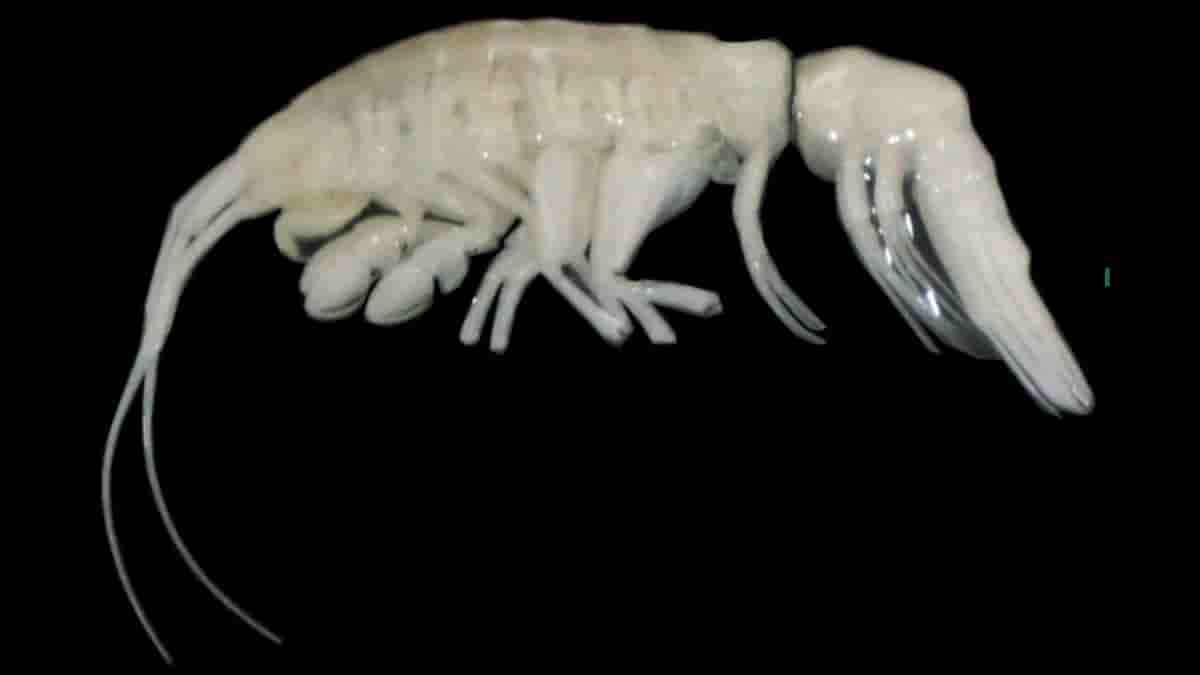Scientists Discover Alien-Like Predator in the Ocean’s Depths, Call It ‘Darkness’

In a groundbreaking discovery, scientists from the US and Chile have uncovered a new deep-sea species living in one of the most extreme environments on Earth—the Atacama Trench off the coast of South America. Named Dulcibella camanchaca, this ghostly-looking amphipod is not your typical deep-sea scavenger. Unlike its relatives that feed on scraps, this tiny crustacean is a hunter, making it the first predatory amphipod ever documented in the crushing depths of the hadal zone.
The team discovered D. camanchaca nearly 7,902 meters below the surface, where pitch darkness, freezing temperatures, and pressures 1,600 times that of the sea level create a seemingly uninhabitable environment. To their surprise, the researchers retrieved four specimens during a 2023 expedition for Chile’s Integrated Deep-Ocean Observing System. Using a baited lander vehicle, they managed to lure this strange creature out of its hidden world.
Measuring less than 4 centimetres, D. camanchaca has pale white colouring and specialized appendages, called gnathopods, that allow it to grab and eat prey in its frigid, lightless habitat. Unlike most amphipods that feed on organic debris drifting to the seafloor, this tiny predator actively hunts for its food—an incredibly rare trait at such extreme depths.
Scientists gave it the name Dulcibella camanchaca as part of a long-standing tradition of naming amphipods after characters from the Spanish novel Don Quixote. The genus Dulcibella is inspired by “Dulcinea del Toboso,” but because the name “Dulcinea” was already taken by a beetle, the species name camanchaca, meaning “darkness” in local South American languages, was chosen to honour the shadowy depths it calls home.

This discovery isn’t just about finding a new creature; it gives scientists a deeper understanding of life in Earth’s least explored regions. The hadal zone—depths below 6,000 meters—remains one of the last frontiers on our planet, where only a handful of species have been documented.
Even more exciting, studying ecosystems like the Atacama Trench could help us understand extraterrestrial life. The extreme conditions of the trench, including its complete lack of light and freezing cold, are similar to what scientists expect to find on ocean-covered moons like Europa and Enceladus. This means discoveries like D. camanchaca could hold clues to what alien life might look like in the universe.
Despite covering 71% of the Earth, 95% of the ocean remains unexplored. The Atacama Trench, stretching as deep as 11 kilometres, shows us that even the harshest environments can support life in ways we’re only beginning to understand.
The discovery of Dulcibella camanchaca reminds us how little we know about our own planet—and that life has an incredible ability to survive, even in the most unimaginable places.


